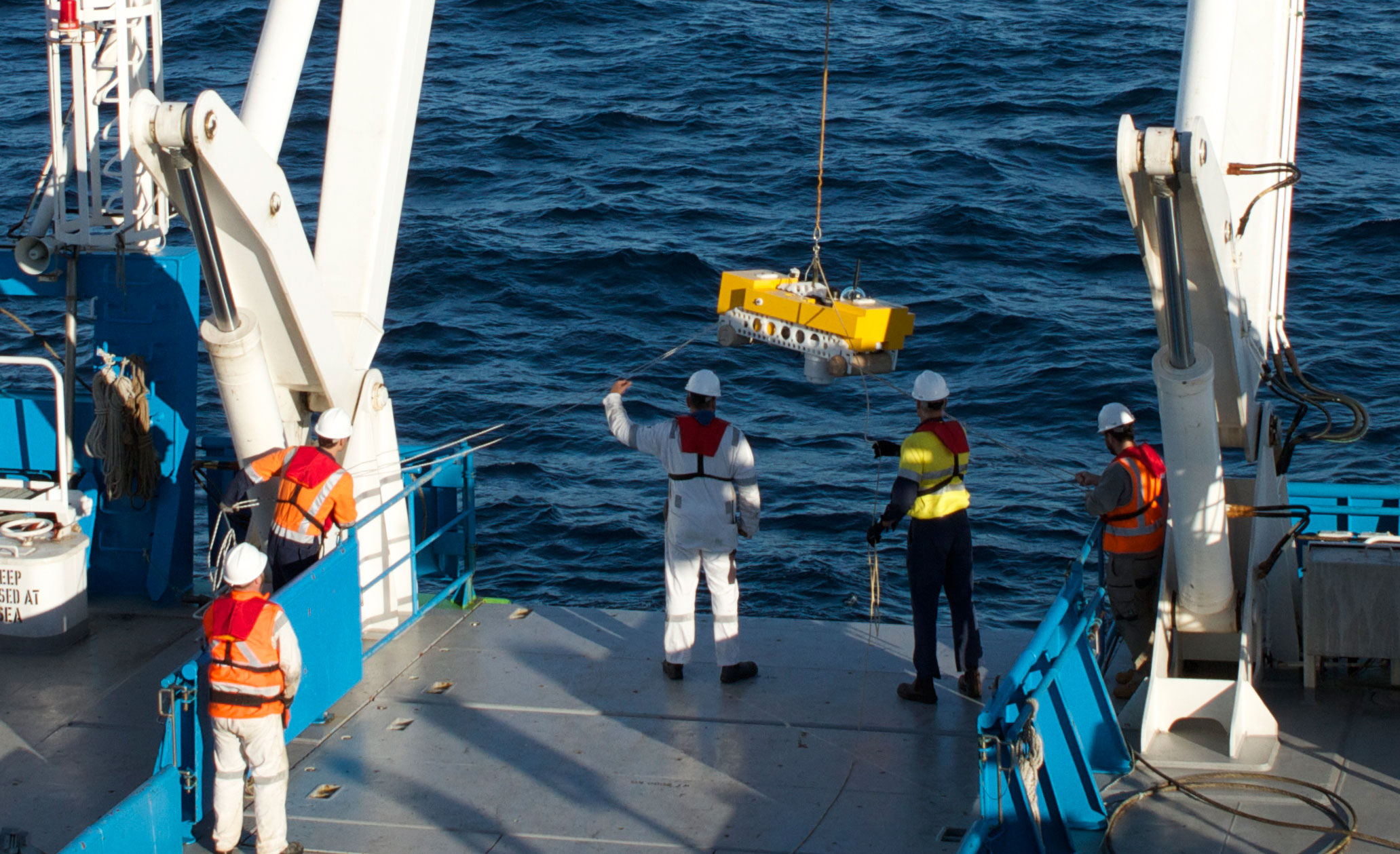Güralp Liber Ocean Bottom Seismometers record migration calls of pygmy blue whales

Image 1: Blue Whale (courtesy of Arctic Images)
Güralp Liber Ocean Bottom Seismometers record migration calls of pygmy blue whales off the coast of Australia and pave way for environmentally responsible exploration.
A fleet of Güralp Liber Ocean Bottom Seismometers (OBS) maintained by Geoscience Australia, funded through AuScope and managed by ANSIR - Research Facilities for Earth Sounding, have recorded the calls of pygmy blue whales as they migrate along the Western Australia coast. As well as demonstrating that the whales stay further from the coast than previously thought, the research has identified an opportunity to test seismic source modelling to ensure environmentally responsible exploration.
The Australian Liber OBS that were deployed are housed in titanium and can remain on the seafloor continuously recording for up to 12 months. They can be commanded to return to the surface using an acoustic communication link. Each OBS incorporates a Güralp 6T-OBS 3-component broadband (0.0167 Hz–100 Hz) seismometer, with a titanium housing; and a hydrophone (2Hz–30KHz) attached to the fourth channel.
The pygmy blue whale calls were recorded on several OBSs on both the broadband seismometers and the hydrophones during a marine seismic survey in 2014-15 that utilised an airgun array as a seismic source. You can listen to an extract of whale calls as recorded on the seismometer in clips 1 and 2.
It is well established that pygmy blue whales migrate along the Western Australia coast from feeding grounds in the Southern Ocean to breeding grounds in the tropical Indian Ocean although the width of the migration corridor is uncertain. It was believed the whales tend to stay mainly at the edge of the continental shelf during their journey, approaching the coast only in the southern migration leg in November–December at Geographe Bay, Western Australia.
In a project at Curtin University led by Prof Alexander Gavrilov with Garrick Paskos and Alexey Goncharov of Geoscience Australia, hydrophone data from fourteen of the Australian OBSs were processed using CHORUS software, which incorporates an automatic pygmy blue whale sound detector. The results clearly demonstrate that the whales tend to stay 300 to 400 km from the coast, and they rarely move inshore.
The recording of pygmy blue whale calls in the background of active marine survey noise further strengthens the case for using the OBS as a powerful environment monitoring and protection capability. Recording of airgun signals by the OBS allows estimating Sound Pressure Levels (SPL) and Sound Exposure Levels (SEL) to very large offsets exceeding 200 km in some cases. These values could be benchmarked against those predicted by seismic source modelling, and against marine mammals’ injury criteria. Australian OBS data from all new surveys could be made open file to allow further analysis to reduce speculation about the impact of seismic surveys’ noise on marine life.

Image 2: Deployment of Liber OBS (Image Courtesy of GeoSciece Australia)
OBS vertical recording
OBS horizontal recording
MEDIA ENQUIRIES TO:
This email address is being protected from spambots. You need JavaScript enabled to view it.
For urgent enquiries please call 020 3727 1000 and speak to Fergus Wheeler, Louisa Feltes or Jess Gill.
NOTES TO EDITORS:
Güralp (www.guralp.com) is a leading global provider of sophisticated seismic monitoring solutions used to understand natural seismological events such as earthquakes, aftershocks and volcanos, as well as induced seismic events, or seismic signals, resulting from human activity.
Our solutions are used in research, civil and industrial applications to increase understanding, optimise processes and to protect people and the environment. Our equipment is installed in all major ocean basins and across all continents worldwide.
Our instruments range in performance from very low frequency, very low noise for global seismology to high dynamic range instruments for local, strong motion monitoring. Our sensors and can be supplied for deployment at the surface, in boreholes and on the ocean bottom. We also provide data acquisition equipment, power and communication accessories and data interpretation software.
Our services include installation and commissioning; network operation; repair and maintenance services; data processing and interpretation.
Headquartered in Reading, in the UK, we have been operating for more than 30 years and have established a global network of distributors who provide local customer support and sales services.
